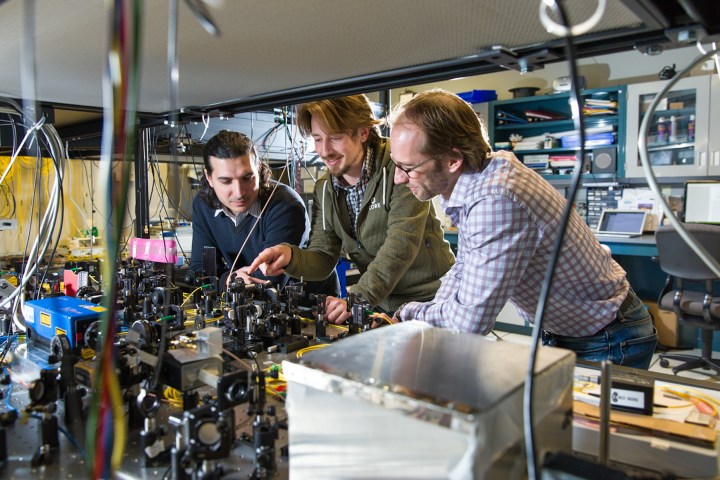
While the method of breaking down people and objects into an energy pattern sounds downright scary (we feel you, Bones), researchers have figured out a way to teleport a particle of light just under four miles away. That doesn’t mean humans will be replicating food anytime soon, but it’s a step in the right direction. More specifically, the researchers teleported a photon over a straight line using the fiber-optical cable structure in the city of Calgary.
The research was conducted through a collaboration between the University of Calgary, a group of United States-based researchers, and the Canadian city itself. Wolfgang Tittel, a professor in the department of physics and astronomy at the University of Calgary, led a team of physicists to set a new record for transferring a quantum state a specific distance using teleportation. The achievement arrives after kicking off the project in 2014 thanks to an Urban Alliance seed grant.
The team managed to teleport two photons of an entangled set, which remained linked to each other despite the distance they traveled.
The project is based on quantum entanglement where two or more photons become entangled with each other to the point that their properties become linked, creating a single “quantum state,” or a set list of properties. The team managed to teleport two photons of an entangled set, which remained linked to each other despite the distance they traveled.
For starters, the team sent the pair’s first proton to city hall while the second proton traveled to the university. After that, the second photon transported to a third location in Calgary. Eventually it “energized” at city hall where the first photon sat and waited for its partner in the entangled pair to arrive.
“What happened is the disembodied transfer of the photon’s quantum state onto the remaining photon of the entangled pair, which is the one that remained six kilometers away at the university,” Tittel explains.
The project made good use of dark fiber, a single optical cable that’s not connected to electronics or networking equipment. The city is currently building a network of these cables because they don’t interfere with quantum technology, a new field to advance computing, imaging, cryptography, and more.
“By opening the city’s dark fiber infrastructure to the private and public sector, non-profit companies, and academia, we help enable the development of projects like quantum encryption and create opportunities for further research, innovation and economic growth in Calgary,” says Calgary’s Innovation and Collaboration project manager Tyler Andruschak.
While the team succeeded in teleporting photons, the achievement had to overcome a few roadblocks. They needed the photons to meet within 10 pico-seconds, but the fluctuating temperatures outside made that difficult. The lab also had to be split into two locations, which impacted city hall’s measurement station. This station included superconducting single-photon detectors that could only work at temperatures less than 1 degree above absolute zero.
There’s no question that the researchers made a huge advancement in moving towards working transporters. However, as 1986’s The Fly graphically points out, we might be better off using cars and airplanes to get from point A to point B.



